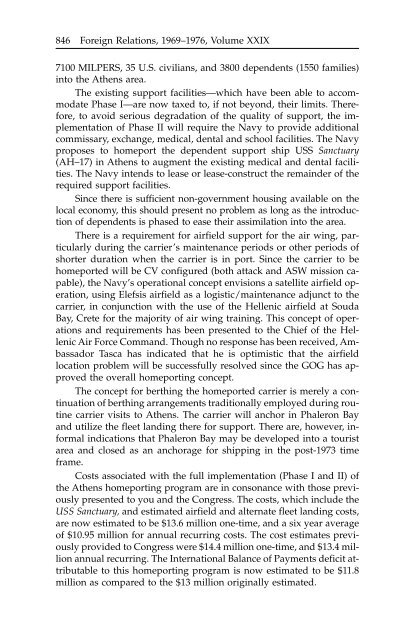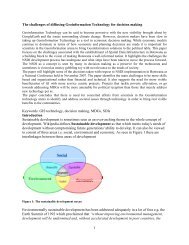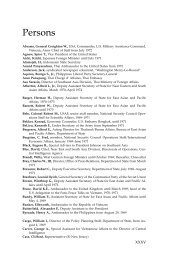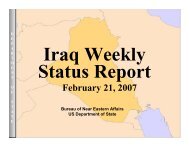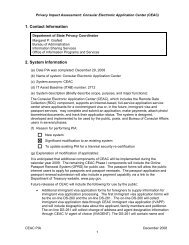Greece - US Department of State
Greece - US Department of State
Greece - US Department of State
Create successful ePaper yourself
Turn your PDF publications into a flip-book with our unique Google optimized e-Paper software.
846 Foreign Relations, 1969–1976, Volume XXIX<br />
7100 MILPERS, 35 U.S. civilians, and 3800 dependents (1550 families)<br />
into the Athens area.<br />
The existing support facilities—which have been able to accommodate<br />
Phase I—are now taxed to, if not beyond, their limits. Therefore,<br />
to avoid serious degradation <strong>of</strong> the quality <strong>of</strong> support, the implementation<br />
<strong>of</strong> Phase II will require the Navy to provide additional<br />
commissary, exchange, medical, dental and school facilities. The Navy<br />
proposes to homeport the dependent support ship <strong>US</strong>S Sanctuary<br />
(AH–17) in Athens to augment the existing medical and dental facilities.<br />
The Navy intends to lease or lease-construct the remainder <strong>of</strong> the<br />
required support facilities.<br />
Since there is sufficient non-government housing available on the<br />
local economy, this should present no problem as long as the introduction<br />
<strong>of</strong> dependents is phased to ease their assimilation into the area.<br />
There is a requirement for airfield support for the air wing, particularly<br />
during the carrier’s maintenance periods or other periods <strong>of</strong><br />
shorter duration when the carrier is in port. Since the carrier to be<br />
homeported will be CV configured (both attack and ASW mission capable),<br />
the Navy’s operational concept envisions a satellite airfield operation,<br />
using Elefsis airfield as a logistic/maintenance adjunct to the<br />
carrier, in conjunction with the use <strong>of</strong> the Hellenic airfield at Souda<br />
Bay, Crete for the majority <strong>of</strong> air wing training. This concept <strong>of</strong> operations<br />
and requirements has been presented to the Chief <strong>of</strong> the Hellenic<br />
Air Force Command. Though no response has been received, Ambassador<br />
Tasca has indicated that he is optimistic that the airfield<br />
location problem will be successfully resolved since the GOG has approved<br />
the overall homeporting concept.<br />
The concept for berthing the homeported carrier is merely a continuation<br />
<strong>of</strong> berthing arrangements traditionally employed during routine<br />
carrier visits to Athens. The carrier will anchor in Phaleron Bay<br />
and utilize the fleet landing there for support. There are, however, informal<br />
indications that Phaleron Bay may be developed into a tourist<br />
area and closed as an anchorage for shipping in the post-1973 time<br />
frame.<br />
Costs associated with the full implementation (Phase I and II) <strong>of</strong><br />
the Athens homeporting program are in consonance with those previously<br />
presented to you and the Congress. The costs, which include the<br />
<strong>US</strong>S Sanctuary, and estimated airfield and alternate fleet landing costs,<br />
are now estimated to be $13.6 million one-time, and a six year average<br />
<strong>of</strong> $10.95 million for annual recurring costs. The cost estimates previously<br />
provided to Congress were $14.4 million one-time, and $13.4 million<br />
annual recurring. The International Balance <strong>of</strong> Payments deficit attributable<br />
to this homeporting program is now estimated to be $11.8<br />
million as compared to the $13 million originally estimated.


